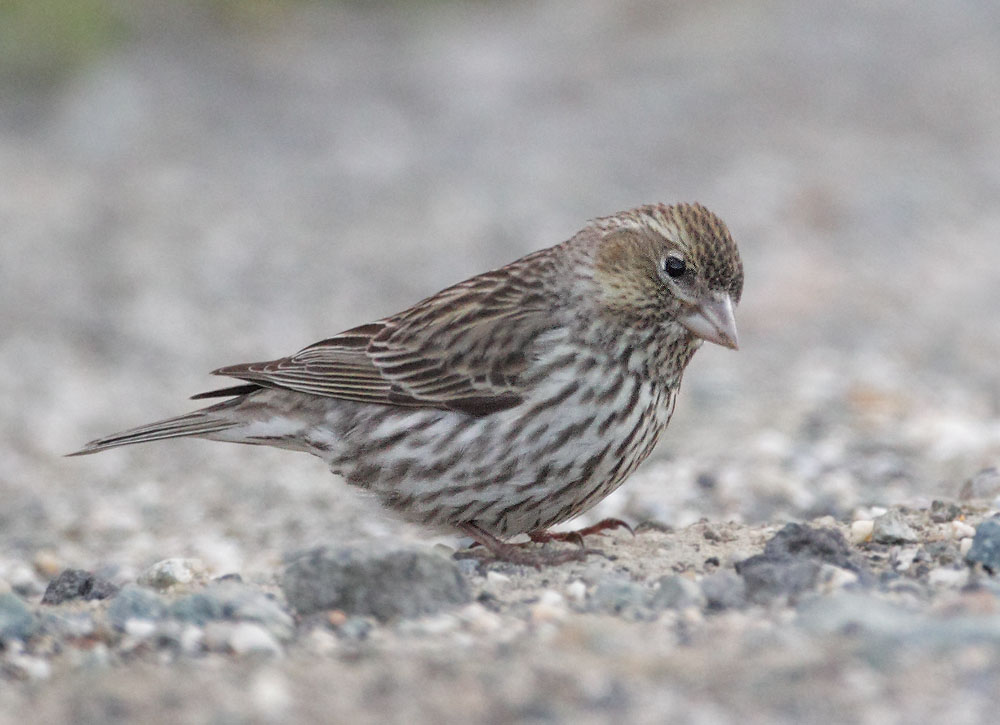Cassin's Finch, Haemorhous cassinii
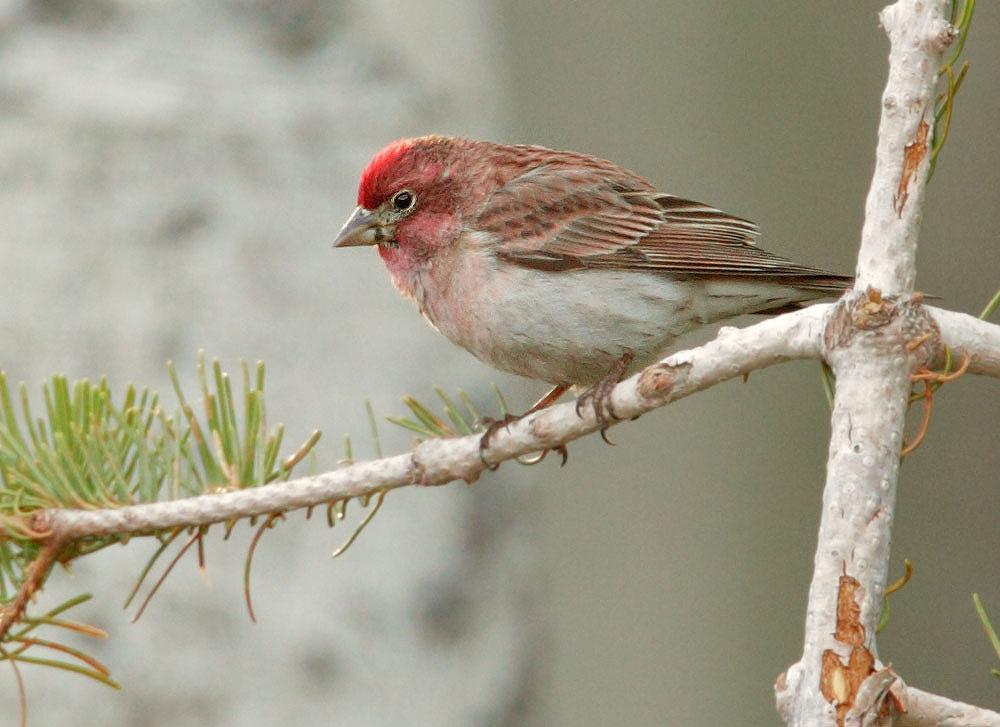
I mostly see Cassin's Finches in summer at Yuba Pass in the Sierras, where you can't miss them as they forage for salt in small flocks on the side of the highway, and perch in the nearby trees, see above and below. One the three Haemorhous finches in North America, along with the House and Purple Finches, Cassin's nest in the coniferous forests of the western mountains. They are pretty easy to distinguish from House Finches, which are more slender, with a more curved upper bill edge (culmen), and in males a different pattern of red. Purple vs. Cassin's is a tough identification challenge, but there's one almost sure distinguishing mark: the thin dark stripes on the undertail coverts of Cassin's, visible in all pictured birds on this page, where almost all Purples are solid white there. The Purple's culmen is slightly curved, where Cassin's is straight, but the difference isn't as clear as between Cassin's and House. The male color pattern is also different: Cassin's has less extensive distribution of red, and the bright red of the crown stands out, where Purple's cranberry color is more even in shade and brightness. The two species also have different vocalizations, as described in standard field guides.
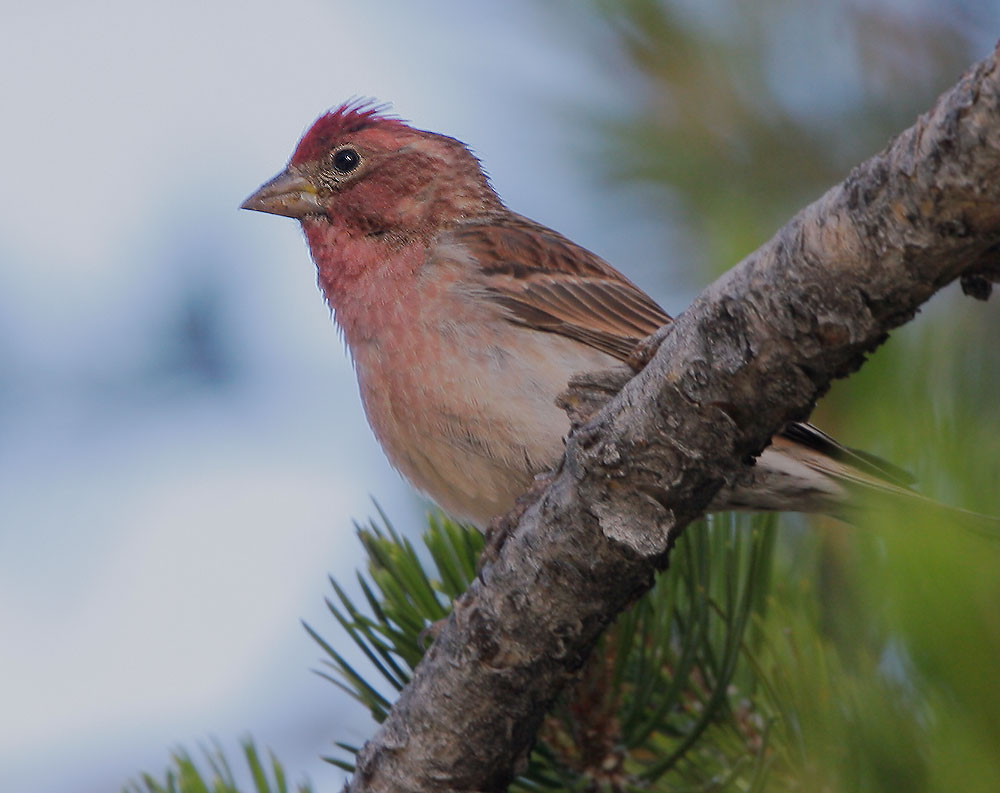
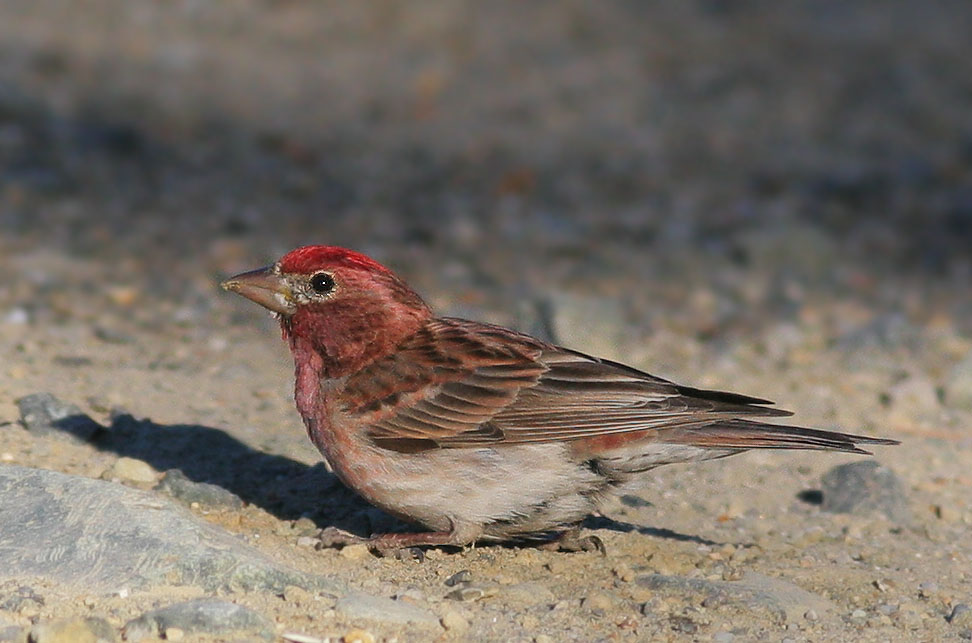
This bird shows the undertail stripes, the stand-out bright red crown, and an especially long bill with a staight culmen; no Purple Finch would have a bill this long.
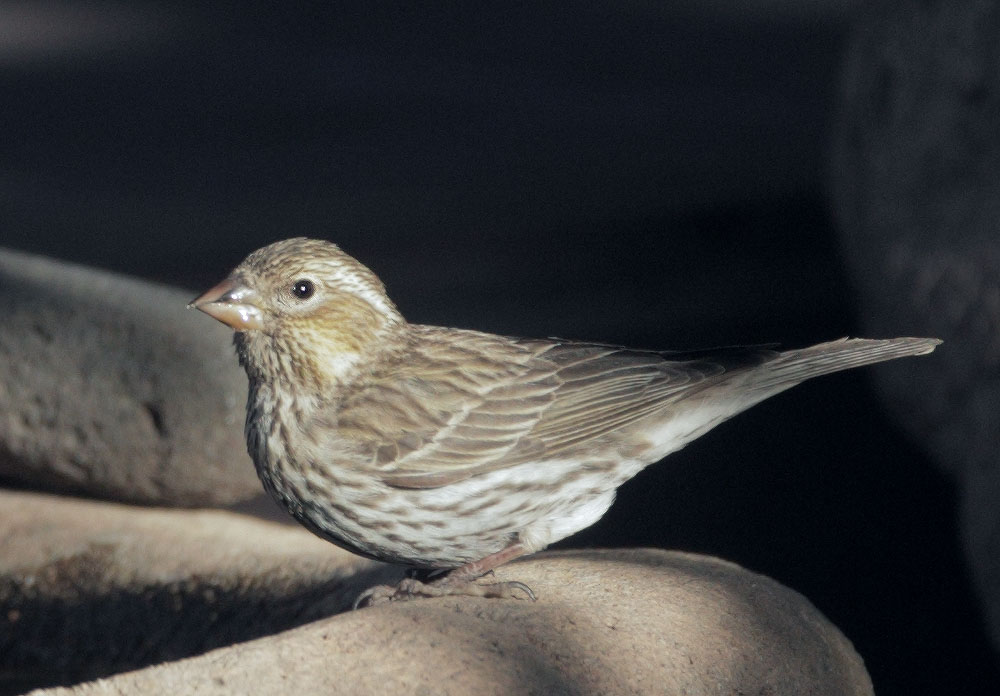
The stripes on the undertail coverts are an almost sure mark for Cassin's Finch as against Purple. Female Haemorhous finches differ in the degree of patterning of the face: almost none in House, Cassin's and Purple having a definite pattern, sometimes less definite in Cassin's. Female Cassin's have shorter bills than males, overlapping more with the bill shape of Purple.
